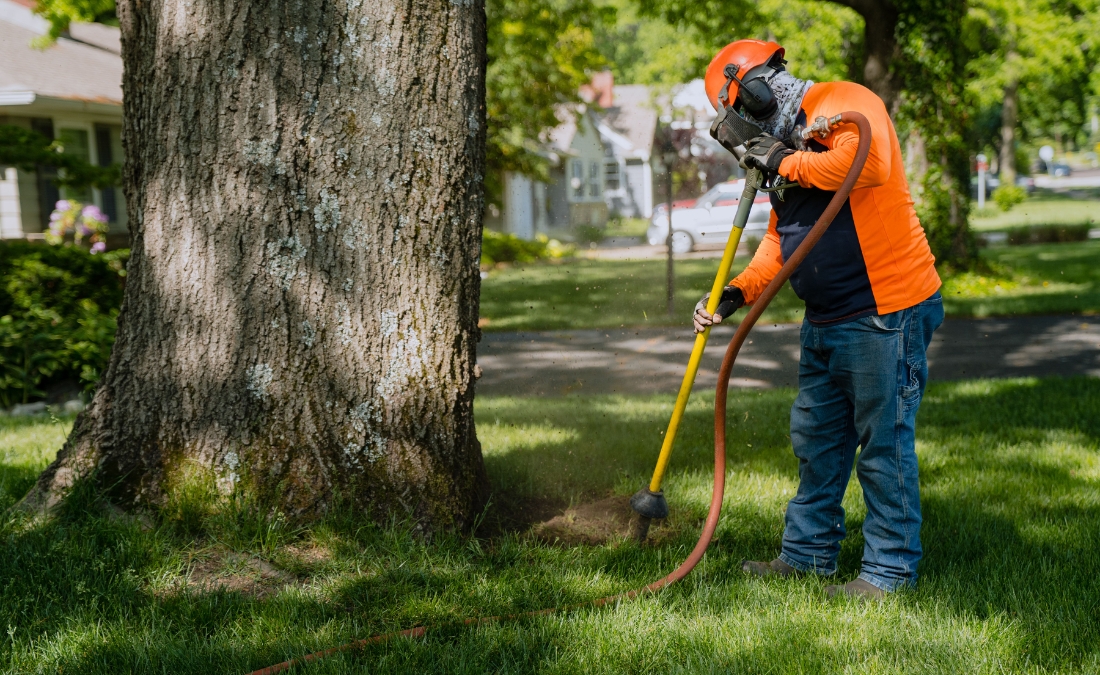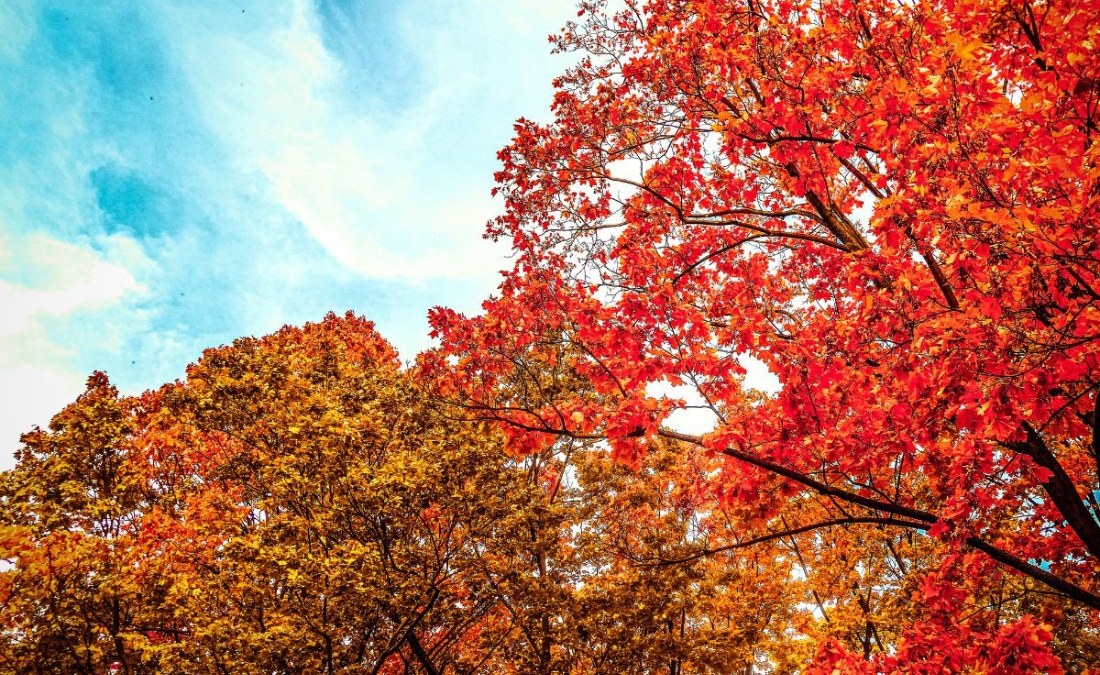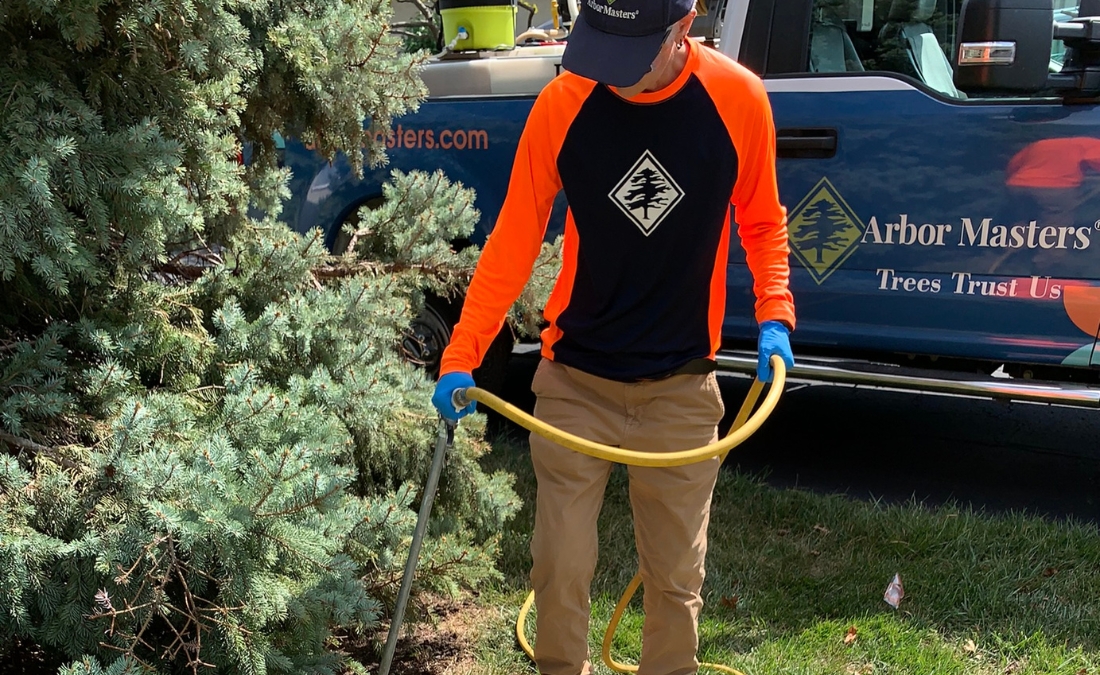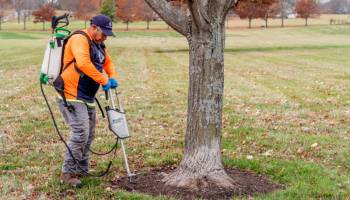Protecting Mature Live Oaks: Winter Storm Guide for Fort Worth Homeowners
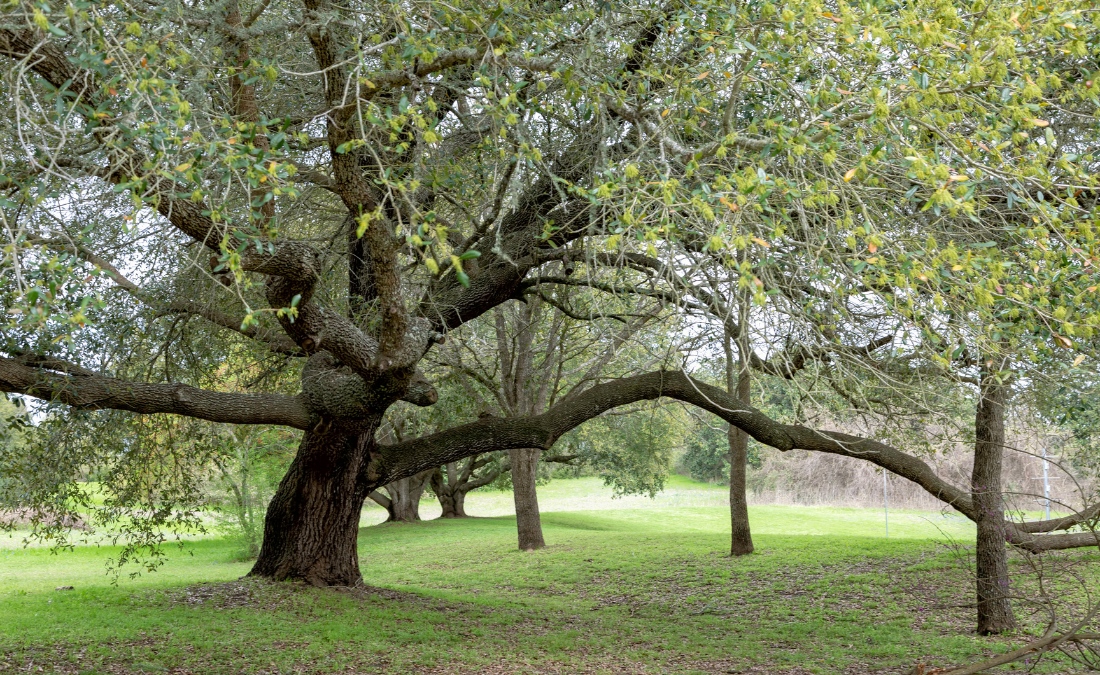
Winter storms threaten DFW’s live oaks – learn how certified arborists protect them through strategic pruning, cabling, and bracing before damage strikes.
Mature live oaks are the crown jewels of many established Fort Worth neighborhoods, from the historic craftsman homes of Fairmount to the prestigious estates of Rivercrest. However, these valuable trees face significant challenges during North Texas winters, when ice storms, freezing rain, and high winds can transform their majestic canopies into potential hazards.
As homeowners in Arlington Heights, Tanglewood, and White Rock Lake know all too well, proper pre-winter preparation is essential to protect both your trees and your property from costly storm damage. This comprehensive guide provides specific strategies for winterizing your mature live oaks, tailored to the unique conditions of established neighborhoods throughout the Fort Worth area.
Key Takeaways
- Live oaks in Fort Worth should be evaluated for winter preparation in September through early November, before the first freeze, but after summer growth has slowed.
- Established neighborhoods, like Fairmount and Arlington Heights, require specialized pruning approaches that balance historic preservation with structural safety.
- Crown thinning of 10-15% is recommended for most live oaks, focusing on removing crossing, diseased, and structurally compromised branches while preserving the tree’s natural shape.
- High-value properties in Rivercrest and Preston Hollow often benefit from professional cabling and bracing systems rather than extensive pruning, preserving property values and tree aesthetics.
- Emergency response plans are essential, with trees closest to structures and access roads receiving priority treatment before winter weather arrives.

Professional winter tree assessments by Certified Arborists help identify potential vulnerabilities before ice and wind storms arrive, especially for mature trees near structures.
Why Live Oaks Are at Risk During North Texas Winters
Live oaks (Quercus virginiana) are remarkably resilient trees, but even these hardy specimens have specific vulnerabilities during North Texas winters. Unlike deciduous trees that shed their leaves before winter, live oaks retain their foliage year-round. This evergreen characteristic, while beautiful, creates unique challenges during ice storms and freezing rain events.
How Ice and Freezing Rain Damage Live Oaks
The Fort Worth area experiences winter weather patterns that can be particularly damaging to live oaks. According to the National Weather Service Fort Worth/Dallas Climate Data, the region averages 2-3 significant ice events annually, with accumulations of 1/4 to 1/2 inch possible during severe storms. This ice builds up on the dense evergreen foliage of live oaks, dramatically increasing weight loads.
A mature live oak can collect hundreds of pounds of ice during a significant storm, with each branch potentially holding 30 times its normal weight. This extraordinary load can cause even healthy branches to fail, especially those with horizontal growth patterns or extended reach. The risk increases in neighborhoods with older trees, such as those found in Arlington Heights and Tanglewood.
PRO TIP: For more information on how severe weather impacts trees in our area, read our guide on identifying and preventing wind damage to Fort Worth trees.
What Are the Common Points of Failure for Live Oaks?
Professional arborists have identified specific failure points that make live oaks particularly vulnerable during winter storms:
- Extended horizontal limbs, especially those exceeding 8-10 feet in length
- Branch unions with included bark (where bark grows between branches)
- Previously damaged areas that have developed decay pockets
- Limbs extending over structures, driveways, or power lines
- Unbalanced canopies resulting from previous improper pruning
Understanding these vulnerabilities is the first step in developing an effective winter preparation strategy for your valuable trees. Each failure point represents an opportunity for preventative care that can save thousands in potential property damage and emergency removal costs.
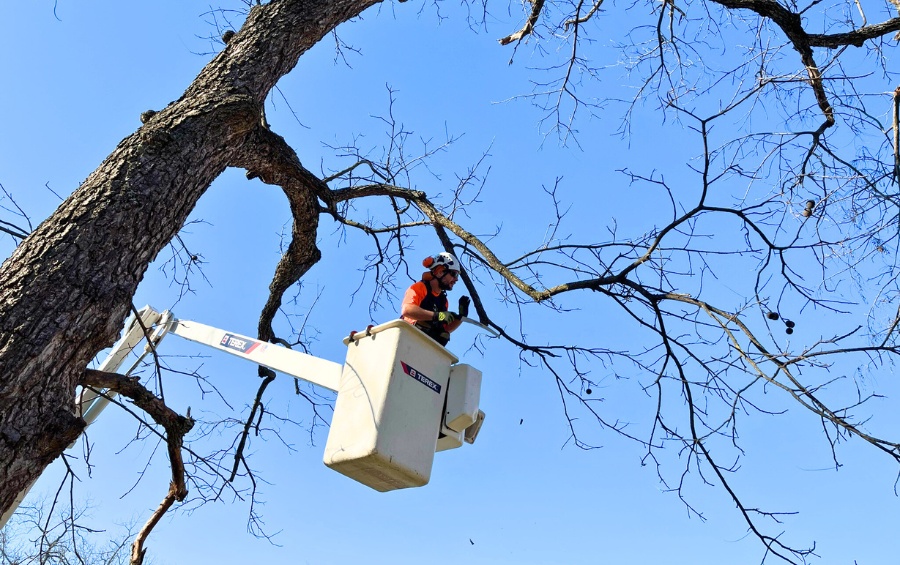
Selective crown thinning by Certified Arborists reduces wind load and ice accumulation without sacrificing the tree’s natural form or structural integrity.
When to Prune Live Oaks
For Fort Worth area homeowners, the ideal window for pre-winter live oak pruning is in November and early December. This timing offers several advantages:
- Summer growth has slowed, minimizing stress to the tree
- Wound closure is still active before winter dormancy
- Sufficient time remains before the typical ice storm season (December-February)
- Disease transmission risks are lower than in spring or summer
According to the Texas A&M Forest Service oak wilt information, this pruning window also reduces the risk of oak wilt transmission. The disease is a critical consideration for valuable live oak specimens throughout North Texas. Research shows that pruning during cooler months when beetle vectors are less active can significantly reduce disease risk.
PRO TIP: For a complete year-round pruning guide for different tree species, read our article on the best time to prune trees in Fort Worth.
Best Tree Care Techniques to Protect Live Oaks from Winter Storms
Preparing your live oaks for North Texas winter storms takes more than a single pruning session. The best approach combines selective pruning to reduce storm stress with structural reinforcement to protect high-value, mature trees. Both strategies work together to prevent costly damage while preserving your tree’s natural shape and strength.
Crown Thinning to Reduce Weight and Wind Resistance
Crown thinning selectively removes smaller branches throughout the canopy to reduce weight and wind resistance. For most live oaks in DFW neighborhoods, a 10-15% thinning is optimal, focusing on:
- Crossing, rubbing, or competing branches
- Weak attachments and included bark unions
- Dead or diseased branches
- Small-diameter branches that will collect ice
The International Society of Arboriculture Tree Owner Information recommends selective thinning as the preferred method for mature live oaks, as it preserves the tree’s natural structure while reducing storm damage risk.
Crown Reduction to Manage Overextended or Hazardous Limbs
This more aggressive approach shortens specific branches to reduce leverage and potential failure points. While generally less desirable for live oaks, selective reduction may be appropriate for:
- Branches extending over structures in neighborhoods like Arlington Heights, where homes are closer to trees
- Correcting previous improper pruning in older neighborhoods
- Addressing specific hazard limbs while preserving overall canopy structure

Professional installation of dynamic cabling systems requires specialized training and equipment to properly support vulnerable branches while allowing for natural movement.
Cabling and Bracing for Structural Support
While pruning is the most common winter preparation strategy, some live oaks benefit more from doing it in conjunction with installing structural support systems. Professional cabling and bracing provide reinforcement for valuable mature trees.
Live oaks with these characteristics are typically good candidates for cabling and bracing rather than extensive pruning:
- Historic or specimen trees in established neighborhoods
- Trees with long, horizontal limbs that define their character
- Previously damaged trees that require preservation
- Trees where aggressive pruning would significantly impact aesthetics
- Multi-stemmed trees with potential failure points at major unions
According to the Tree Care Industry Association’s ANSI A300 Standards, properly installed support systems can reduce winter failure rates by up to 70% in suitable candidates.
“Our approach at Arbor Masters combines careful assessment with customized solutions. We’ve found that many valuable live oaks in established DFW neighborhoods benefit more from well-designed support systems than from aggressive pruning. This preserves both the tree’s health and the property’s value while providing superior storm protection.” – Getth Nelson, ISA Certified Arborist at Arbor Masters
What Are the Signs My Live Oak Needs a Professional Assessment?
Watch for these signs that your live oak may be especially vulnerable to winter storm damage:
- Cracks or splits in major branches or trunk unions
- Previous branch failures or storm damage
- Leaning trunk or unbalanced canopy
- Dead or dying branches larger than 2 inches in diameter
- Fungal growth or conks on the trunk or major limbs
- Peeling or missing bark in significant areas
- Visible cavities or decay pockets
- Poor pruning cuts from previous work
If you notice any of these problems with your tree, it may be time to call an arborist and have them provide a more detailed examination.
Frequently Asked Questions About Winter Storm Protection for Live Oaks
When is the best time to prune live oaks in Fort Worth for winter storm preparation?
September through early November is ideal for pre-winter pruning of live oaks in the DFW area. This timing allows trees to heal before winter dormancy while avoiding the summer heat stress period. The work should be completed before the first freeze, but after peak summer growth has slowed.
How much pruning is safe for mature live oaks before winter?
Most mature live oaks benefit from 10-15% crown thinning, focused on removing crossing, diseased, and structurally compromised branches. Removing more than 20% of live growth in a single pruning session can stress the tree and potentially reduce its winter hardiness. Focus on quality over quantity, targeting specific problem areas rather than overall canopy reduction.
What emergency preparations should I make for my live oaks before winter storms?
Beyond pruning and structural support, prepare by documenting tree conditions with photos before winter, creating clear access paths for emergency services, identifying Certified Arborists who offer 24/7 emergency response, and understanding your homeowner’s insurance coverage for tree damage. Remove valuable items from under trees when ice storms are forecast and have tarps available to cover any storm damage to your home.
Get Expert Live Oak Care and Winter Protection from Arbor Masters
Preparing your valuable live oaks for winter storms requires specialized knowledge and expertise. At Arbor Masters, our ISA Certified Arborists provide comprehensive winter preparation services, including professional pruning, cabling and bracing installation, and preventative tree health care programs.
Our experienced team understands the unique challenges facing homeowners in established Fort Worth neighborhoods. We deliver customized solutions that protect your property while preserving the beauty and value of your mature trees. As a TCIA Accredited company, we maintain the highest standards of safety, quality, and professionalism.
Don’t wait until winter weather threatens your valuable trees. Contact Arbor Masters today at 469-586-5829 or request a winter tree assessment online to protect your live oaks from seasonal storm damage.

Get the latest local news, tree care tips, special offers, and company updates directly to your inbox! It's easy to subscribe and there's no spam - we promise.
"*" indicates required fields

